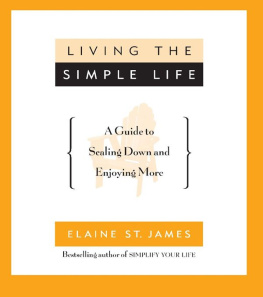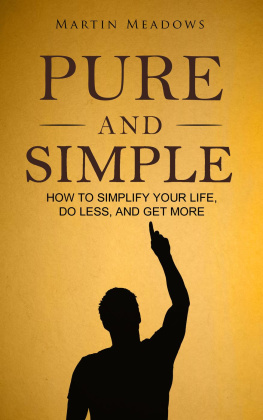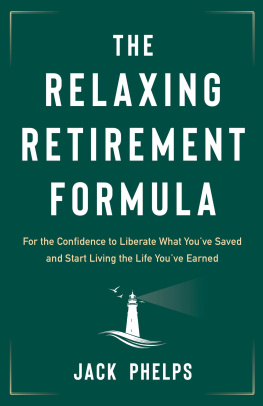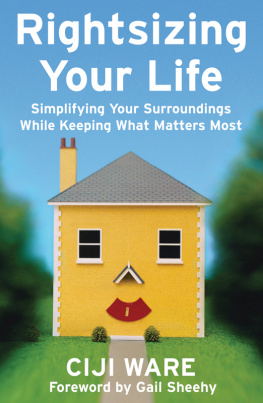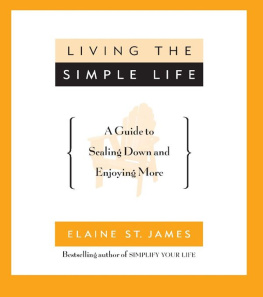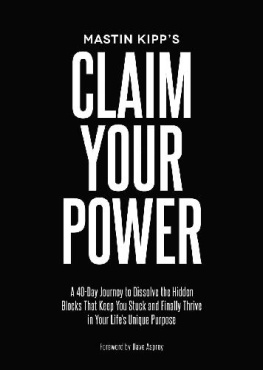I am deeply indebted to Catha Paquette for her perceptive and insightful reading of the manuscript.
Id like to thank Marcia Burtt, Joe Phillips, and Pat Rushton for their advice and assistance throughout the process of writing this book.
Im grateful for the continuing friendship and support of Judy Babcock, Phil Babcock, Himilce Novas, Tiffany Miller, Marisa Kennedy Miller, Jackie Powers, Carolyn Howe, Meg Torbert, Bev Brennan, Vera Cole, and Jamie OToole, and for the presence and guidance of Michael Russer, Stu Sherman, Bob Maloy, Don Foster, Michelle Gysan, Colleen McCarthy Evans, and Maryke White.
Id like to thank my agent, Jane Dystel, and my publisher, Bob Miller, for helping me put this book together, and I especially appreciate the wisdom, direction, and encouragement of my editor, Laurie Abkemeier.
Many thanks to Cynthia Ferguson, Carlie Gnatzig, Erin Webreck, and all the other readers who gave me permission to use their comments in this book, and to everyone who wrote to share their excitement, their enthusiasm, and their ideas for living simpler lives.
I thank my husband, Wolcott Gibbs, Jr., for everything, most especially for helping me keep life simple.
I first made the decision to start living a simpler life in the summer of 1990. Prior to that time I had spent roughly twelve years as a real estate investor. I worked ten-hour days buying, refurbishing, managing, and selling investment properties.
During the previous year I had organized a real estate seminar business, had written a book on real estate investing, and had just completed a national media tour to promote it.
My life was ruled by a black leather time management system that weighed five pounds and took up half my desk space. My day was driven by the classic prioritizing question, What is the best use of my time right now?
Sometime after college I began, as many of us did, to work at two speeds: faster and fastest. I moved at this pace from six in the morning until seven or eight oclock at night for more years than I care to count.
It would probably be accurate to say that I had become a fairly typical urban professional on my own fast track.
Though my husband, Gibbs, who is older and wiser than I am, was never technically a yuppie, his life was complicated by the fact that he was married to one. And he, too, maintained a full career schedule as a magazine editor, while at the same time writing a series of adventure novels. He was also an active volunteer with various community organizations.
In addition to our time-consuming careers, we had all the other duties and responsibilities associated with maintaining our lives. Though my two stepsonswho had been with us on weekends for the previous eight yearswere now out on their own, we still had four cats and a busy social life.
The gods must have been smiling on me in the summer of 1990. I stopped for five minutes in the middle of July that year, and in a quiet moment I looked at my time management system as though I were seeing it for the first time. As I went over the list of phone calls I had to make, the people I had to see, the places I had to go, and the things I had to do, all of a sudden a light bulb went on. I realized my life had become too complicated, and I made the decision then and there to start simplifying it.
I had finally reached a point where keeping up such a hectic pace no longer seemed worth it. It occurred to me that we had, through long hours and a lot of hard work, achieved a modicum of success. We had many of the trappings of the modern lifestyle, but we didnt have the time, and sometimes not even the energy, to enjoy them. And even worse, we had little time for each other, and practically no time for ourselves.
A large part of the dissatisfaction for me was that I had never particularly enjoyed my work. I had continued to do it because I hadnt a clue what else I might be able to do. At that moment it was unthinkable that I could change my career or cut back on my work schedule.
But I decided there were many other areas where we could begin to cut back. My first objective was to create some breathing space so we could start to figure out how we could do things differently.
And so we began the process of simplifying. In the first couple of months we eliminated a lot of the clutter that was taking up our time and energy, and we moved to a smaller home. Over the next couple of years we made significant changes in our household routines, our social lives, our entertainment patterns, our civic and volunteer schedules, our financial picture, our personal lives, and eventually even our work lives.
I then got the idea to write a book on the things we had done to scale back. That book, Simplify Your Life: 100 Ways to Slow Down and Enjoy the Things That Really Matter, was published in May 1994. It outlines many of the steps Gibbs and I took to simplify.
In the process of simplifying the outer areas of our lives, we freed up close to thirty hours a week. This gave me the opportunity to begin the daunting prospect of thinking about making some career changes, and also the chance to address some of the emotional, psychological, and spiritual issues that had been bubbling beneath the surface of my fast-paced life, but that Id seldom taken the time to explore.
I then decided to write a book that would discuss some of those issues. And so I wrote Inner Simplicity: 100 Ways to Regain Peace and Nourish Your Soul, which was published in May 1995.
When we first made the decision to simplify, we had no idea that we were in the beginning phase of a major national trend. We simply wanted to get out from under the complications that twelve fast-paced years had generated.
If you, too, are thinking about making some changes and simplifying, or have already started the process, youre not alone.
According to the Trends Research Institute of Rhinebeck, New York, a privately funded organization that forecasts and tracks changes in our culture, simplifying is one of the leading movements of the decade.
A 1995 nationwide survey of a cross section of Americans revealed that close to 30 percent of the respondents had voluntarily downshifted, and were working fewer hours for less pay so they could spend more time with their families.
Numerous other surveys have shown that anywhere from 60 to 80 percent of those questioned would be willing to accept a reduction in pay if they could work fewer hours.
This represents a major nationwide change in personal priorities. It says that many of us have had enough of the fast-paced, hard-working lifestyle that has become the norm over the last decade. It says millions of Americans want to live their lives differently.

